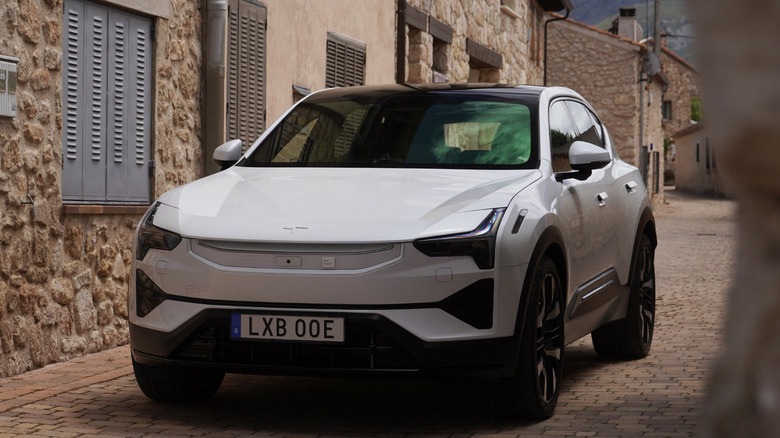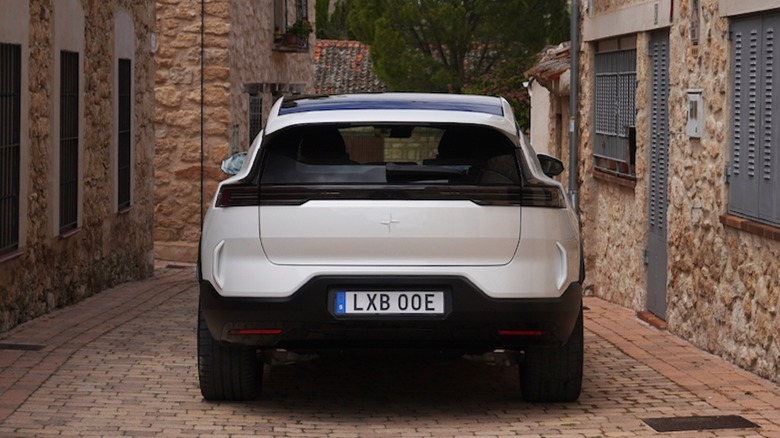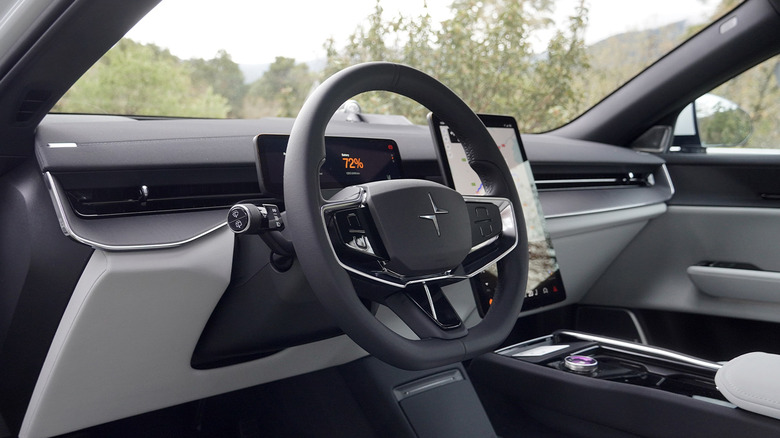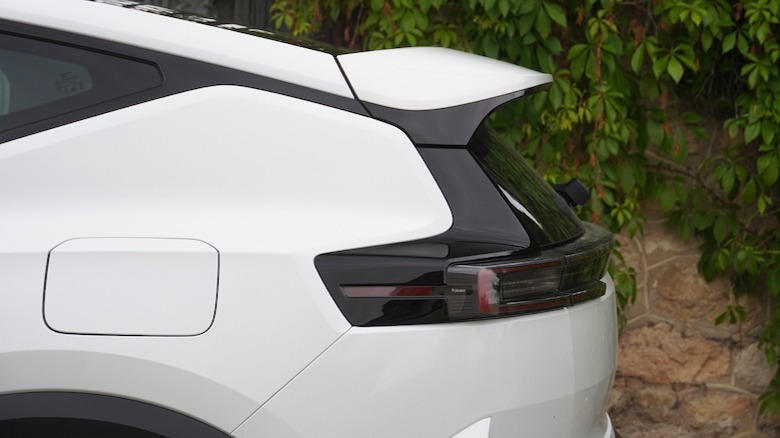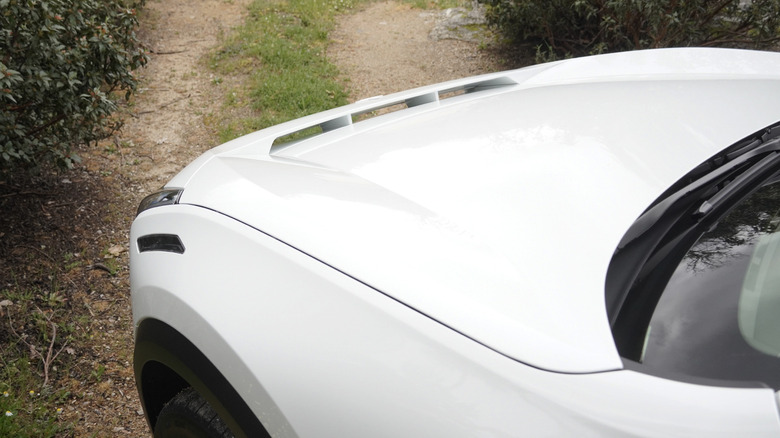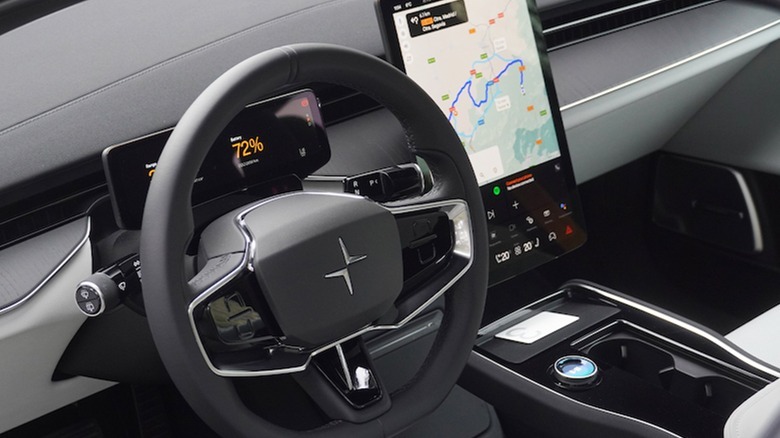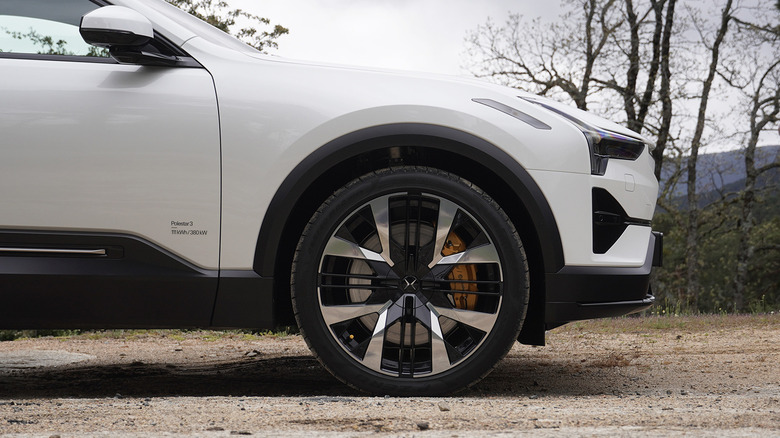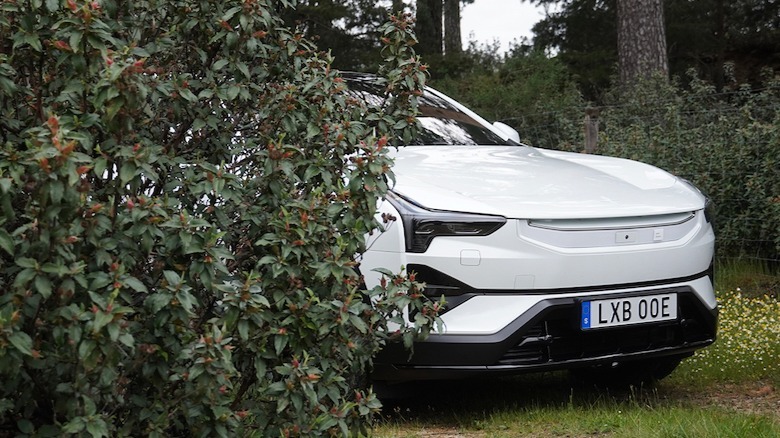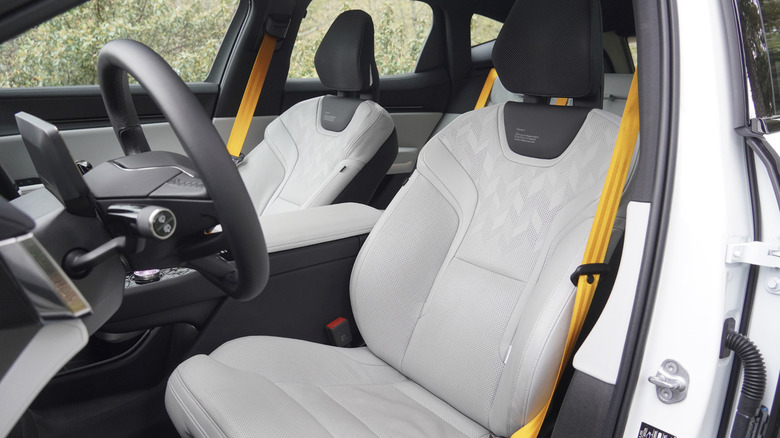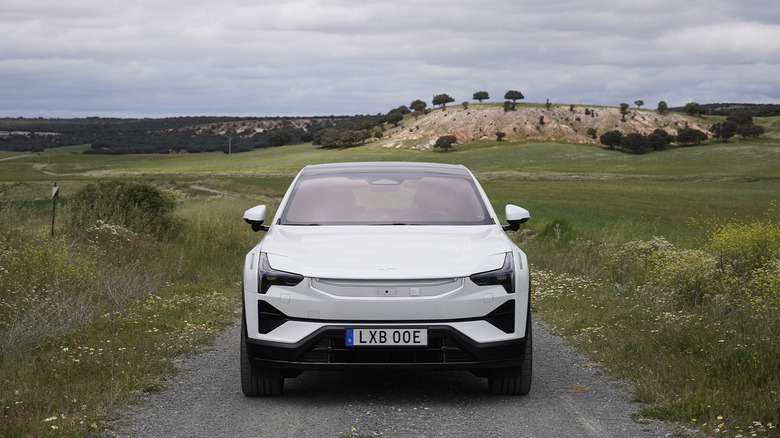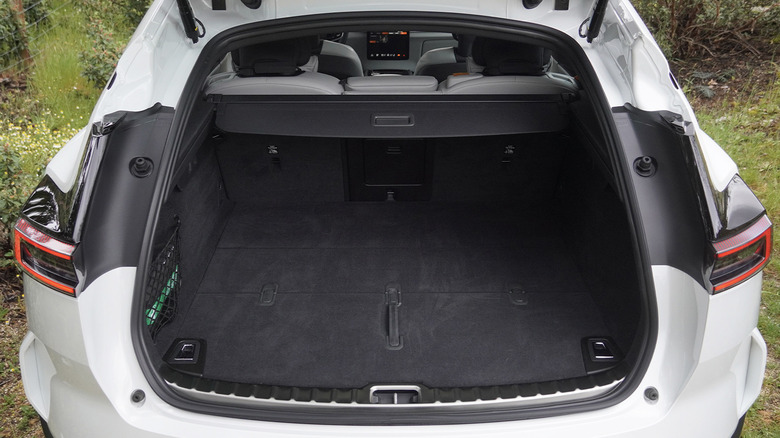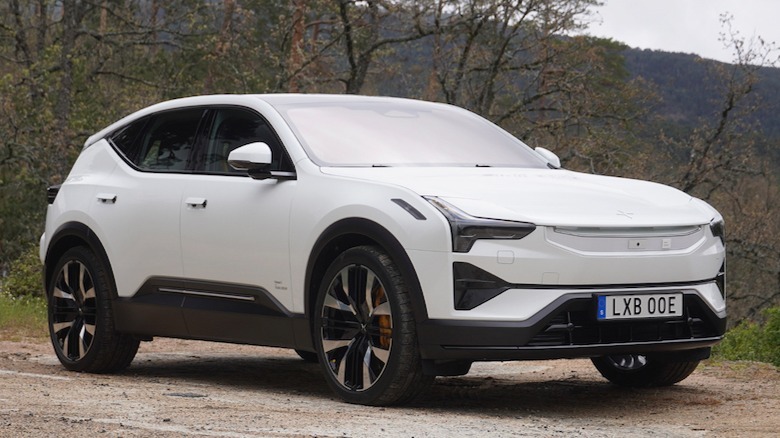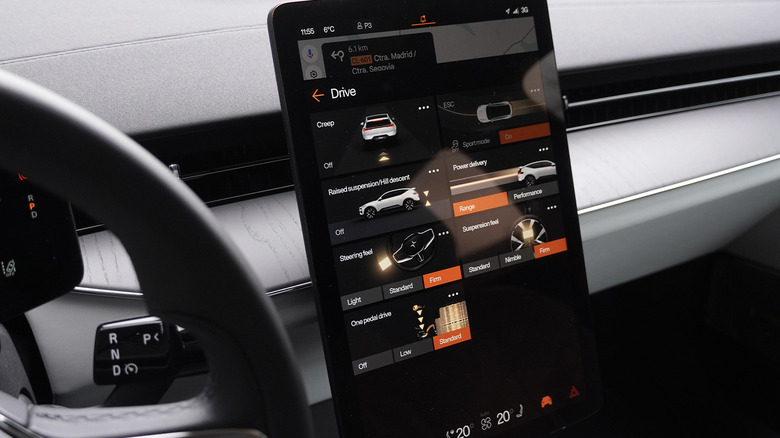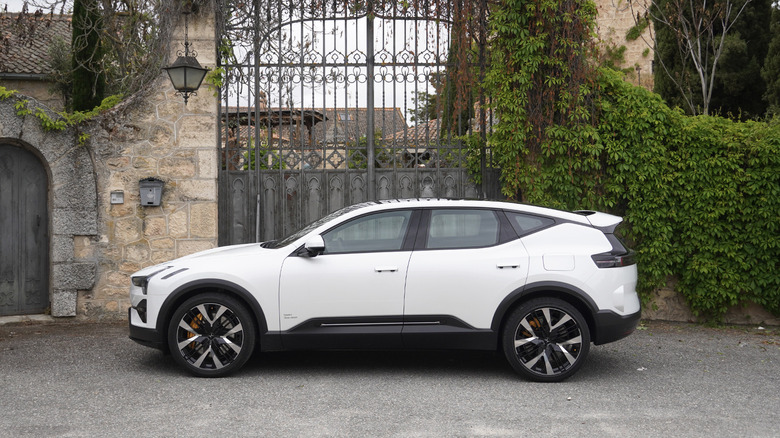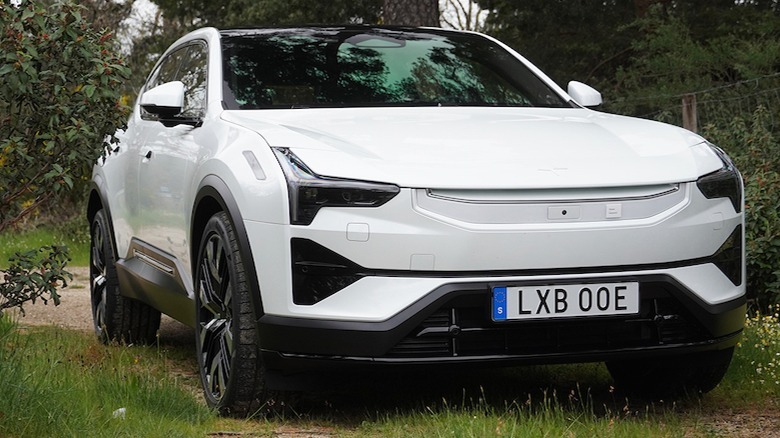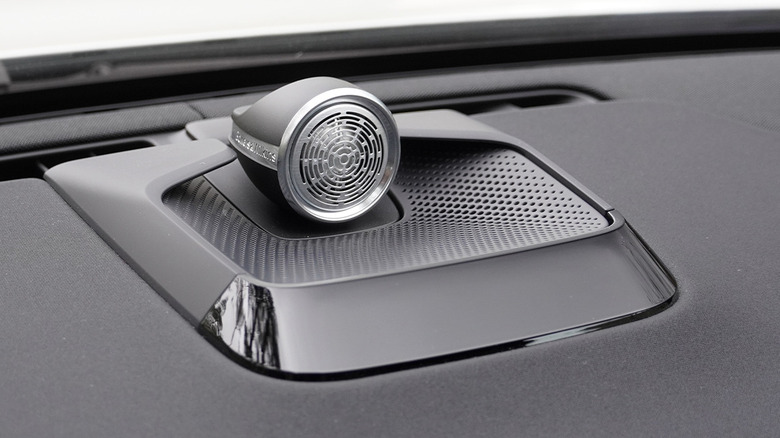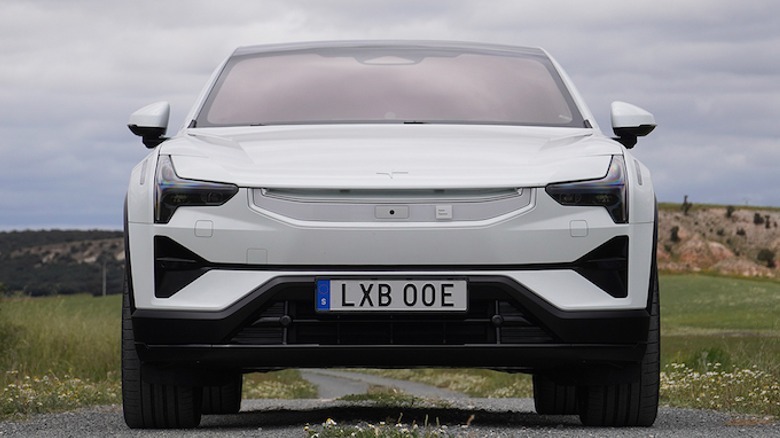2025 Polestar 3 First Drive: Range, Pace And Refinement To Take On Porsche And Tesla
Later this year, Polestar will officially enter the Volvo spinoff's three EV era, by adding the unimaginatively named 3 and 4 crossovers to the Polestar 2 currently available at dealers. The hybrid flagship 1 that introduced Polestar to the world as a separate manufacturer stays a thing of the past, however, and future Polestar 5 and Polestar 6 concepts remain just that for now.
Polestar recently invited select media to drive both the forthcoming 2025 Polestar 3 and 4 in Spain, though somewhat surprisingly, out of numerical order. But, as usual, journalists on-hand all signed an embargo agreement that means Polestar decides when our reports go live—so in this case, even though I drove the 4 the day before the 3, I can only discuss how the 3's driving dynamics and technology target the biggest swath of American consumers possible. Stay tuned for more on the 4–and its controversial rear window (or lack thereof)–next month.
Boosting power stats more than range
Of course, for any EV, specs and range require a bit of clarification for potential customers. The 2025 Polestar 3 manages solid figures for both, with a 111-kilowatt-hour battery and dual motors that produce a combined 489 horsepower and 620 lb-ft of torque for the base model. Adding on the Performance Pack ramps output up to 517 hp and 671 lb-ft, though the max range then drops from a respectable 315 miles to a just-acceptable 279 miles.
Polestar promises the 3 can handle DC fast charging at speeds up to 250 kilowatts, which should allow for a 10-80% charge time of 30 minutes. The 3's range and charging stats somewhat surprisingly fall in line with the 2, then, so the real steps forward come in the big power bump. And, though the 0-60 time for a Performance Pack-equipped 3 clocks in at 4.5 seconds, according to Polestar, rest assured that every time I mashed the go pedal on the roads of Madrid and the surrounding Spanish countryside, the old (by now) sensation of instantaneously available torque make traditional stats seem somewhat irrelevant.
The Polestar 3 looks familiar, in a good way
The 3's exterior also falls in line with design language already established by the Polestar 1 and 2, which means simple lines and flattish panels adorned with a bit of plastic cladding without any undo or excessive ornamentation. The 3 does receive a few nifty touches for a hint of futurism, though, mostly in the form of a nose spoiler and rear lightbar. For the most part, though, the tidy shape carries the torch from Polestar's previous models toward the conceptual future of the 5 sedan and 6 roadster. All the designs manage to nail a decidedly unoffensive vision of Scandinavian luxury, helping to usher in some of the simplicity that other EV manufacturers also seem to have finally realized lately.
The interior continues that theme, through the lens of Polestar's uniquely eco-conscious manufacturing. Recyclable materials used throughout for the dash textiles, seat upholstery, and plastics attempt to reduce the 3's carbon footprint while enhancing the application of mono-materials to make end-of-life recycling more sustainable. Large storage spaces cater to the family life that a crossover SUV must support, while the dash features a large, vertically oriented touchscreen complemented by a minimalist gauge cluster on the steering wheel column.
Testing the Polestar 3 in Spain
All of the 3's design details came to light at the official reveal last fall in Los Angeles, however. So, the question at hand in Spain mostly surrounded how the 3 drives, especially in light of the Long Range Single Motor 2's switch last year to rear-wheel drive rather than front-wheel drive. That decision seemed intended to further differentiate Polestar from Volvo and establish more of a sporty spirit for the brand, while simultaneously reducing some of the unintended consequences of one-pedal regen causing some throttle liftoff oversteer in a front-wheel-drive platform.
But the 3 still shares a Geely chassis with Volvo, as opposed to the forthcoming 5 and 6 which will debut more of Polestar's in-house engineering. So I wondered whether the 3 (and 4) might continue the 2's transition toward enthusiast driving, or cater better to a family concerned with safety, a la Volvo's customer base. Time in Madrid and the hills proved that the 3 splits the gap between those two personalities quite well.
A commuter EV in town
In weekday stop-and-go traffic, power modulation and one-pedal regen helped our commute out of town fly by without too much of an adjustment period. When I needed to scoot around delivery trucks or work vans, nudging into the "throttle" easily picked up pace but without any concomitant torque steer that so much all-wheel-drive power might produce in other EVs. Even the visibility, despite a thick D-pillar design, let me maneuver between lanes with ease (then again, I spent the previous day in the 4, so just having a rear window felt like a blessing).
Out onto the highway, I noticed a serenity that my recent raft of GM Ultium electric drives tended to lack. Relatively minimal tire hum or road noise impinged on my jetlagged calm in the cabin. And the lane-keep function, available with Polestar's Pilot Pack option, managed the relatively narrow Spanish roadways without balking too frequently at cars passing. An occasional ping-pong off marks on the tarmac cropped up, but the software typically recovered in just a second to a smoother line.
Sporty crossover dynamics in the hills
Then, we turned up into the mountains on–without exaggeration–some of the finest paved roads in all of Europe. (Apparently, Spain spends a ton of the European Union's euros on asphalt.) Here, I fingered into the 3's large touchscreen to select all of the sportiest drive modes possible: ESC in Sport mode, power delivery set to Performance, Firm for the steering and suspension, and Standard with Creep off for the one-pedal regen.
The ESC setting caused a noticeable uptick in power delivery, revealing that the dual electric motors had previously been perhaps reined in to prevent wheel-slip. Even without any tire chirps or burnouts, though, more juice hit the asphalt per millimeter of pedal travel, creating the sensation of additional output even if the peak rating stayed the same.
Impressive weight management in a spacious EV
Meanwhile, the suspension and steering combined to make a crossover that weighs just shy of 5,700 pounds feel downright nimble. With both set to Firm, steering assist drops and the dampers stiffen, and even the air suspension never rides cushiony enough to introduce body roll or vagueness into the chassis. I rocked through some tightening hairpins, even trying to induce oversteer on roads occasionally dotted with quickly melting snowflakes, but this 3 just felt planted at all times, and ready for more.
The perception of playfulness communicates best through the generously bolstered driver's seat more than the steering, perhaps, and yet I never felt squeezed in or claustrophobic. Without touching on the 4's drivetrain quite yet, I began to believe that the 3's rear-biased power output, with a dual-clutch system on the rear electric motor that can disconnect to increase range, helps to produce a more sporting dynamism for the power delivery.
The 3 marks a first EV application of this BorgWarner system, similar to an Audi RS 3 but using electricity rather than a barking turbocharged inline-five for motivation. Staggered tires measuring 265 millimeters wide up front and 295 at the rear also likely contribute to the larger 3's athleticism and steering feel.
UI via the central touchscreen and gauge cluster
Switching into the various drive modes requires dipping into Polestar's updated user interface, which brand reps on hand in Spain proudly and repeatedly explained. And the system works intuitively, to an extent, with a series of tiles on each screen and configurable favorites for more frequently used widgets. I discovered on my drive that allowing for multiple ways to reach the same screen can cause momentary confusion, but would hazard that more time with a 3 might ameliorate some of my frustration.
Much of the UI programming aims to compensate for the underlying Android Automotive software, which, for example, allows only a birdseye map on the large touchscreen's navigation page. For turn-by-turn arrows, I needed to switch the smaller gauge screen over to another page. Luckily, Polestar will allow Apple CarPlay, both wired and wirelessly—an acknowledgment that customers consider this almost a must in the modern era (and something that may burn Cadillac's upcoming Optiq EV).
Real-world range for a daily driveable EV
In this current EV era specifically, range estimates tend to play out quite well in the real world, too. Over the course of 204 kilometers of spirited driving, with the climate control blasting and massaging seats rumbling, on mountain roads that climbed over 5,000 feet of elevation, I went through 44% of the available charge and 250 kilometers of the remaining range readout. Not bad, I thought, for a relatively upright crossover—until I took a closer look at a dead-on profile angle and noticed the 3 actually rides lower and longer than in my mind's eye.
Part of that impression comes down to the impressive interior volume, however, which a full panoramic roof helps to amplify. And yet, I will never buy a car with a full pano roof unless a fully opaque retractable screen comes optional, especially for an electric car that must chew into range to keep such a large greenhouse canopy cooled.
Even if Polestar decides against a screen for the 3—though the aftermarket may compensate with tinting or fabric solutions—I still found a lot to like on the interior. Little premium touches include a large volume knob with a tactile burled finish, plus a bumping Bowers & Wilkins sound system that truly opens up while streaming Dolby Atmos-prepped songs via the Tidal app (Apple Music also supports Dolby Atmos). I did, however, need many extra attempts to comprehend the un-labeled haptic buttons on the steering wheel, the use of which changes depending on context and the explanation of which only pops up on the small gauge cluster screen when prompted by a swipe of a finger.
2025 Polestar 3 Verdict
Pricing for the 2025 Polestar 3 starts at $73,400 for the Long Range Dual-Motor, and $79,400 for the Performance Pack version (a Polestar 3 Launch Edition with the Plus and Pilot packs lands first, from $78,900); my advice—as usual with Polestars, probably my most commonly recommended EV purchases for friends and family—would be to start low.
Do I need the extra power of the Performance Pack or the ADAS available with the Pilot Pack? Probably not, since electric torque gets the job done just fine and I generally prefer using normal cruise control more than assisted or adaptive systems in the hopes of forcing myself to pay more attention.
Even while upping the luxury and tech, the 3 manages to stay competitive, especially as Polestar targets the Tesla Model Y (serious build quality concerns), Audi Q8 e-tron (iffy range and somewhat outdated), or even a Maserati Grecale Folgore (just skip it). Whether the Polestar 3 can challenge a Porsche Macan EV seems dubious, from my perspective, but regardless, this new crossover represents another solid entrant from Polestar that can hopefully help to boost public perception of one of my favorite brands, both here in the United States and across the world.
